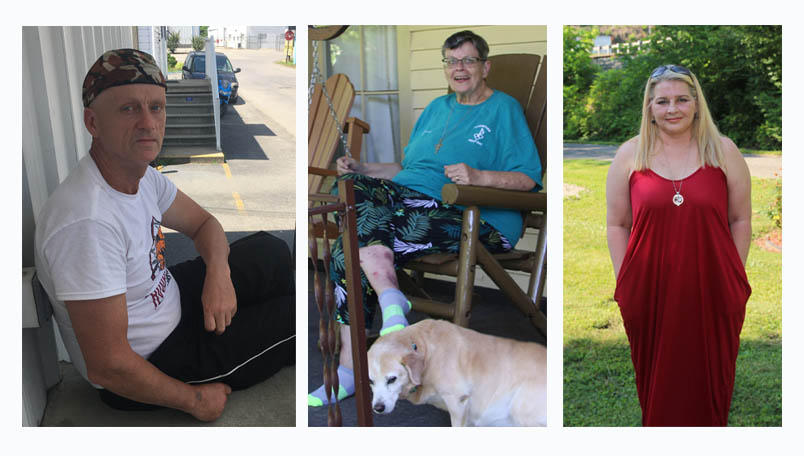Nearly half of the nation’s rural counties saw an uptick in new cases last week. About a third of rural counties are red zones – counties where the rate of new infection surpasses a threshold set by White House advisers.
The surge in new COVID-19 cases moved deeper into rural America last week, with the number of nonmetropolitan counties in the pandemic’s “red zone” climbing from 630 to 734 from July 18 to July 25.
Red zone counties are those where the rate of new COVID-19 cases exceeds 100 per 100,000 residents during a one-week period. The definition was coined in a leaked White House report listing regions that should consider reinstating restrictions because of high infection rates. This story analyzes data from Sunday to Sunday.
On the map, dark red counties are nonmetropolitan (or rural) red zones, and light red counties are metropolitan red zones. Dark and light green are nonmetropolitan and metropolitan counties respectively with under 100 new cases per 100,000. Gray and black are nonmetropolitan and metropolitan counties respectively with no new cases of COVID-19 for the period.
View the full-page version of the map.
Another indication of the surge in rural America is that the number of new cases in nonmetropolitan counties increased from one week to the next, while the number of new cases in metropolitan areas declined.
Rural counties had 56,400 new cases of COVID-19 the week of July 25. That’s a 16 percent increase over the previous week’s new-case count of 48,400. Metropolitan counties, which contain about 80 percent of the nation’s population, had higher raw numbers of new cases than rural areas. But the number of new cases dropped slightly, from 408,500 the week of July 18 to 402,000 the week of July 25.
Nearly half of all rural counties had higher rates of new cases this week than last.
The map of the nation’s red-zone counties shows distinct regional patterns.
- The South is awash in red from southwest Texas to North Carolina.
- The Great Lake States and Northeast have a much smaller proportion of red-zone counties.
- Southern California and Arizona are red-zone regions, while adjoining New Mexico is mixed.
- The Pacific Northwest has fewer red-zone counties, with the exception of interior Washington state.
The Midwest and Intermountain West have more complicated infection patterns. The region contains most of the 217 nonmetropolitan counties that had no cases during the past week. But they also contain dozens of counties (mostly rural) with higher rates of infections. The Daily Yonder’s previous analysis of these counties shows that their high infection rates generally lead back to meatpacking plants and counties with a larger proportion of American Indians. Prisons are also a major driver of high infection rates in rural counties.
More than a quarter (549) of the nation’s approximately 2,000 rural counties have been in red zones for a month or more. Three hundred rural counties are in red zones for the first time this week.
This article was originally published by the Daily Yonder.



